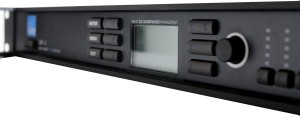This paper is available in
Français too
 Lake technology is widely recognized and respected in the field of digital signal processing. The technological approach of this manufacturer has brought innovative elements to this field. A little more than a decade ago, two Australians, Bruce Jackson and David McGrath, theorized concepts that have helped to create a different vision in the approach to signal processing.
Lake technology is widely recognized and respected in the field of digital signal processing. The technological approach of this manufacturer has brought innovative elements to this field. A little more than a decade ago, two Australians, Bruce Jackson and David McGrath, theorized concepts that have helped to create a different vision in the approach to signal processing.
Lake Technology was founded in 1991 by David McGrath and Brian Connolly. In 2004, Lake Technology became an integral part of Dolby Laboratory and the famous Dolby Lake was introduced in 2006. In 2009, Lab.Gruppen acquired Lake Technology, which is now an integral part of this company.
The LM 44 is based on Lake signal processing technology. We find many similarities with the other processor in the range, the LM26. However, the two processors differ in the number of inputs and in the number and type of outputs. The LM 44 has four analog inputs and four analog outputs, while the LM 26 has two inputs to six outputs. The LM 44 provides four AES input pairs and four AES output pairs and allows access to a Dante digital audio network via four inputs to eight outputs. The LM 44 benefits from the latest developments in the Lake Mesa EQ technology and incorporates four Mesa EQ modules, each module with a separate input and a completely independent signal processing chain.
Applications for the LM 44
Given these characteristics, the question remains as to the use of a processor, when many manufacturers of sound reinforcement systems offer more advanced processing as an integrated part of the amplification system itself. However, it is just right for the following applications:
- As a FoH Matrix.
- As a line driver for amplified systems.
- To manage saved scenes (EQ, alignment, protection) in an insert EQ.
- As a Dante I/O interface unit.
- As a CU (Control Unit) for managing multiple consoles for festivals, for example.
- As a processor for traditional multi-way sound systems.
The LM44 is small and compact, only a single 19-inch rack chassis including the integrated universal power supply. Its base configuration 4 x 4 allows it to substitute existing Dolby Lake processors in many applications. It is a rather practical solution for setting up sound systems that require up to 4 x 4 audio inputs/outputs.
In use, two modes: Contour or Mesa?
The processors may be used in either Mesa EQ (4 modules) or Contour (2 modules) mode. Mesa mode is most commonly used for distribution and signal processing. Contour mode allows it to be used for filtering conventional multi-way sound systems.
Inputs and outputs
The LM44 has three specific audio interfaces: 4 x 4 Analog, AES/EBU 4 x 4 and Dante 4 x 8.
In practice, all scenarios can now be covered; in fact, mixing consoles feature all conventional analog input and output interfaces, but also AES/EBU interfaces for signal transport under excellent conditions. Consoles equipped with an interface for Audinate’s Dante digital audio transmission can be easily connected with the LM44. This networked digital audio transport format constitutes, in itself, a simple, fast and, above all, extremely powerful solution.



